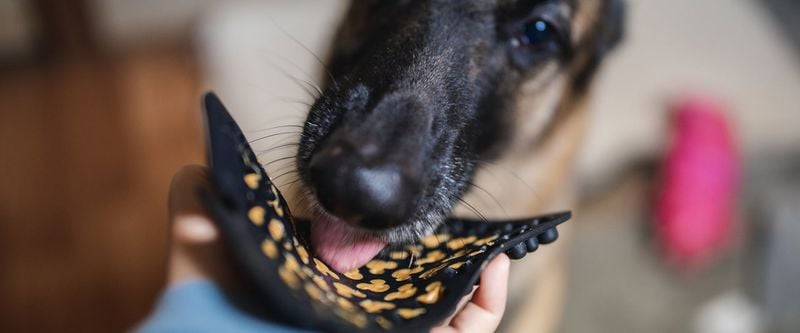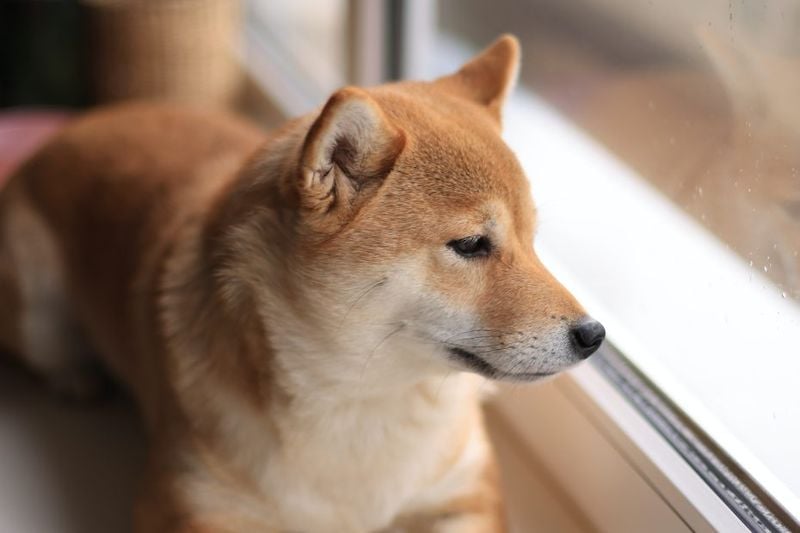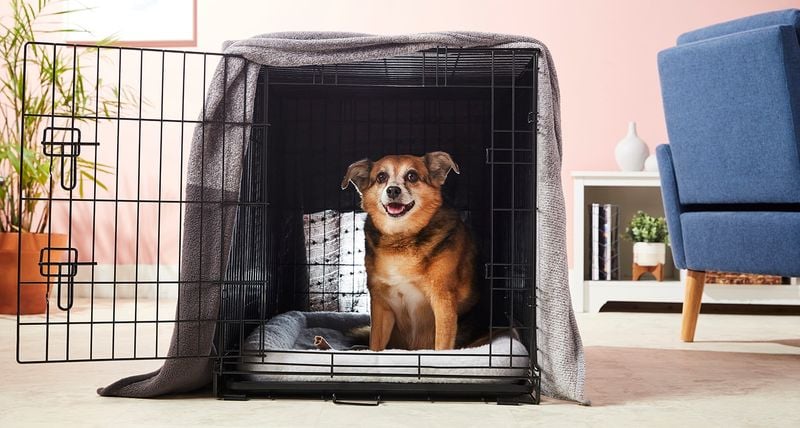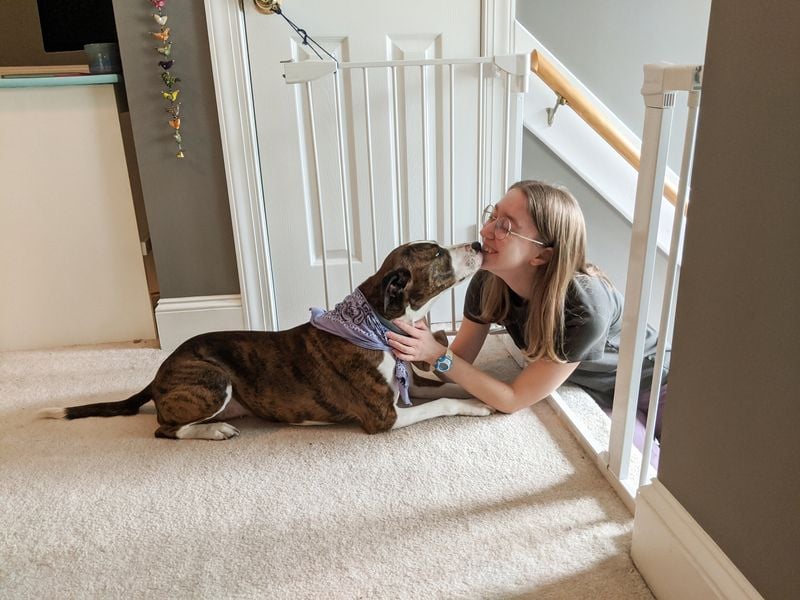9 Vet-Approved Ways to Help Your Dog With Separation Anxiety
Does your furry friend howl, chew furniture, or have accidents when you leave the house? These behaviors might signal separation anxiety, a common issue affecting many dogs.
When our four-legged companions become overly attached, being alone can trigger genuine distress for them.
The good news is that veterinarians have identified several effective strategies to help ease your dog’s anxiety and make time apart less stressful for both of you.
1. Start with short departures
Gradual exposure works wonders for anxious pups. Begin by stepping outside for just 30 seconds, then return without making a fuss. Your dog learns that departures aren’t scary because you always come back.
Slowly increase these practice sessions from seconds to minutes, then hours. The key is patience—some dogs might need weeks of these mini-departures before showing improvement.
Keep a journal tracking your dog’s progress. Note any triggers or setbacks so you can adjust your training accordingly. Remember, consistency builds confidence in your pet’s mind.
2. Create a safe, comforting space
Transform a specific area into your dog’s sanctuary when you’re away. Include their bed, favorite toys, and items carrying your scent like an unwashed t-shirt. This familiar-smelling space provides security during your absence.
Some dogs prefer cozy corners or crates lined with soft blankets. Others need room to move around. Watch what your pet naturally gravitates toward when seeking comfort.
Background noise helps too! Many veterinarians recommend leaving on a television or radio tuned to calm programs. The voices create an illusion of company that soothes anxious pups until you return.
3. Use puzzle toys and treat-dispensers

Mental engagement works magic for anxious dogs! Puzzle toys filled with treats create positive associations with alone time while keeping your pup’s brain busy. Kong toys stuffed with frozen peanut butter can provide 30+ minutes of focused distraction.
Rotating between different puzzle types prevents boredom. Try treat-dispensing balls one day and snuffle mats the next. Save these special toys exclusively for when you’re leaving.
The goal isn’t just distraction—it’s creating a new emotional response. Rather than thinking “Oh no, my human is leaving!” your dog shifts to “Great! Now I get my special puzzle time!” This mental reframing significantly reduces anxiety.
4. Desensitize departure cues
Dogs are incredibly observant. They notice when you grab keys, put on shoes, or pick up your purse—actions that signal “I’m leaving!” These cues alone can trigger anxiety before you’re even gone.
Break these associations by performing departure routines randomly without actually leaving. Pick up your keys, then sit on the couch. Put on your coat, then make dinner. Grab your purse, then watch TV.
Veterinary behaviorists call this “uncoupling.” When departure cues no longer predict actual departures, they lose their anxiety-producing power. Practice these fake-outs several times daily for a couple weeks until your dog shows indifference to these previously stressful signals.
5. Keep goodbyes and hellos low-key
Dramatic farewells actually increase your dog’s distress! When you make a big production of leaving—with extended hugs, baby talk, and apologizing—you unintentionally signal that something upsetting is happening.
Veterinarians recommend a casual approach instead. Leave with minimal interaction, perhaps just a quick pat or simple “see you later” in a normal tone. The same applies to returns—wait until your excited pup calms down before giving attention.
This technique feels counterintuitive to many owners who want to reassure their pets. However, matter-of-fact departures and arrivals communicate that time apart is just a normal, non-threatening part of life—nothing to get worked up about.
6. Exercise before leaving
A tired dog is typically a calmer dog! Morning walks, fetch sessions, or backyard playtime before your departure helps burn excess energy that might otherwise fuel anxious behaviors. Aim for 30 minutes of active exercise when possible.
Physical activity releases endorphins—natural mood elevators that create feelings of relaxation and contentment. These chemicals can remain active for several hours after exercise, helping your dog stay peaceful during your absence.
Mental stimulation counts too! Training sessions with commands like “sit-stay” or teaching new tricks provides cognitive exercise. A dog who’s physically tired and mentally satisfied is far more likely to settle down for a nap rather than pace anxiously after you leave.
7. Use calming aids
Veterinarians often recommend supportive products to complement behavioral training. Adaptil diffusers release synthetic versions of the calming pheromones mother dogs naturally produce, creating a soothing environment. These come in collar, spray, and plug-in options.
Anxiety wraps like ThunderShirts apply gentle, constant pressure that many dogs find comforting—similar to swaddling an infant. The sensation works through nervous system pathways to reduce stress responses.
Calming music specifically designed for dogs has been clinically shown to reduce anxiety. These compositions feature simplified melodies and specific sound frequencies that resonate with canine hearing. Some veterinarians may also recommend supplements like L-theanine or CBD products, though always consult your vet before trying these approaches.
8. Train independence gradually
Many dogs with separation anxiety lack confidence in being alone. “Stay” training builds this independence muscle! Start by asking your dog to stay on their bed while you’re just a few feet away, rewarding calm behavior.
Gradually increase distance—move to the other side of the room, then briefly step out of sight. Practice having your dog stay in one room while you’re in another, starting with seconds and building to minutes. The bathroom makes an excellent training location since dogs are accustomed to brief separations there.
Mat training is particularly effective. Teach your dog that their special mat means “relax here until released.” This portable boundary helps anxious dogs understand when it’s time to settle down, regardless of where you are in relation to them.
9. Seek professional help if needed
Sometimes separation anxiety requires expert intervention. If your dog shows extreme symptoms—destructive behavior, self-injury, excessive vocalization, or elimination problems—consult your veterinarian. They might refer you to a certified veterinary behaviorist or trainer specializing in anxiety issues.
Professionals can create customized treatment plans and might recommend temporary anti-anxiety medications to help your dog while behavioral modification takes effect. These medications aren’t sedatives but work to balance brain chemistry, making your dog more receptive to training.
Don’t feel discouraged if you need help! Severe separation anxiety isn’t a reflection of your training abilities or bond with your pet. Like human anxiety disorders, some cases have strong genetic components requiring specialized approaches for the best outcomes.














